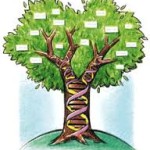Article featured by New Scientist.
“THE GLOBAL financial crisis of 2008 took the world by surprise. (…) there is a growing feeling that orthodox economics can’t provide the answers to our most pressing problems, such as why inequality is spiralling. (…)
The stated aim of this Ernst Strüngmann Forum at the Frankfurt Institute for Advanced Studies was to create “a new synthesis for economics”(…) – an unlikely alliance of economists, anthropologists, ecologists and evolutionary biologists – (…) hope their ideas will mark the beginning of a new movement to rework economics using tools from more successful scientific disciplines.
(…)
The problems start with Homo economicus, a species of fantasy beings who stand at the centre of orthodox economics. (…) Over the years, there have been various attempts to inject more realism into the field by incorporating insights into how humans actually behave. (…)
But the complexities introduced by behavioural economics make it too unwieldy to be applied across the board. (…)
Its aim was to try to address the macroeconomic problem by looking to psychology, anthropology, evolutionary biology and our growing understanding of the dynamics of collective behaviour. (…)
Using a mathematical model of price fluctuations, for example, Bell has shown that prestige bias – our tendency to copy successful or prestigious individuals – influences pricing and investor behaviour in a way that creates or exacerbates market bubbles.
We also adapt our decisions according to the situation, which in turn changes the situations faced by others, and so on. The stability or otherwise of financial markets, for instance, depends to a great extent on traders (…)
Take the popular notion of the “wisdom of the crowd” (…) “This is often misplaced,” says Couzin, who studies collective behaviour in animals (…) . Couzin and his colleagues showed last year that the wisdom of the crowd works only under certain conditions – and that contrary to popular belief, small groups with access to many sources of information tend to make the best decisions.
(…)
Taking into account such effects requires economists to abandon one-size-fits-all mathematical formulae in favour of “agent-based” modelling – computer programs that give virtual economic agents differing characteristics that in turn determine interactions. (…)
Orthodox economics likes to portray economies as stately ships proceeding forwards on an even keel, occasionally buffeted by unforeseen storms. Kirman prefers a different metaphor, one borrowed from biology: economies are like slime moulds, collections of single-celled organisms that move as a single body, constantly reorganising themselves to slide in directions that are neither understood nor necessarily desired by their component parts.” read full article














